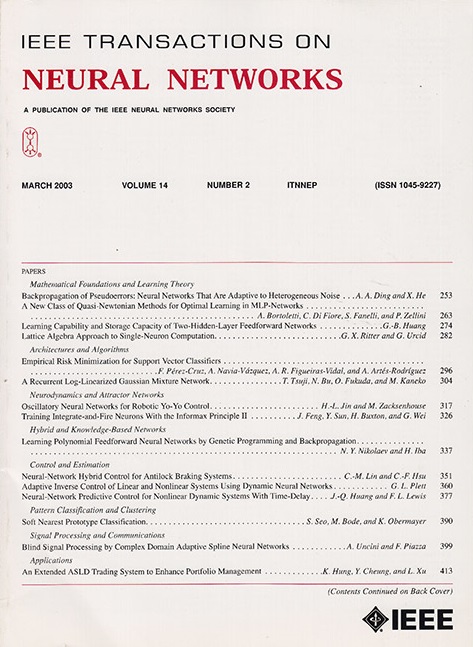Knowledge Transfer and Reinforcement Based on Biunbiased Neural Network: A Novel Solution for Open-Set Fault Transfer Diagnosis
IF 8.9
1区 计算机科学
Q1 COMPUTER SCIENCE, ARTIFICIAL INTELLIGENCE
IEEE transactions on neural networks and learning systems
Pub Date : 2025-03-29
DOI:10.1109/TNNLS.2025.3569582
引用次数: 0
Abstract
Fault transfer diagnosis is a key technology to ensure the reliability and safety of industrial systems, the core of which is to identify the health status of the equipment among different working conditions with multiclassification methods. However, most of them are based on a closed-set assumption that the label space among different working conditions is consistent, which is hard to satisfy in a practical industrial environment as unknown faults would inevitably occur during operation, i.e., the open-set fault transfer diagnosis (OSFTD) problem. Moreover, during the transfer process, unnecessary source-specific knowledge tends to be adapted, which brings about biased diagnostics on both domain and category. Aiming at this issue, an OSFTD framework, coined as knowledge transfer and reinforcement based on biunbiased neural network (KTR-BUNN), is proposed. First, a domain-unbiased knowledge transfer subnet is proposed, including an uncertainty-aware fault transferability evaluator (FTE) that estimates the transferability of target-domain samples unbiasedly to guide distribution alignment of known faults and a triple-tier unknown fault separator (UFS) that takes transferability as the criterion to extrapolate unknown faults. Second, a class-unbiased knowledge reinforcement subnet is designed to promote the recognition of fault semantic features at the embedding space, where fault knowledge graphs (FKGs) are constructed to describe the relationships between fault types, and they are optimized by a contrastive fault correlation loss, so that fine-grained class-level fault features can be further aligned. The knowledge transfer and knowledge reinforcement mechanisms work jointly to facilitate the performance of OSFTD. Finally, extensive experimental results conducted on diverse diagnostic tasks illustrate the superiority of the proposed KTR-BUNN.基于双偏神经网络的知识转移与强化:一种新的开集故障转移诊断方法
故障传递诊断是保证工业系统可靠性和安全性的关键技术,其核心是利用多分类方法识别设备在不同工况下的健康状态。然而,大多数方法都是基于闭集假设,即不同工况之间的标签空间是一致的,这在实际工业环境中难以满足,因为在运行过程中不可避免地会出现未知故障,即开集故障转移诊断问题。此外,在迁移过程中,不需要的特定于源的知识往往会被适应,这导致在领域和类别上的诊断都有偏差。针对这一问题,提出了一种基于双无偏神经网络(KTR-BUNN)的知识转移与强化框架。首先,提出了一个领域无偏知识转移子网,包括一个不确定性感知的故障可转移性评估器(FTE),它无偏地估计目标领域样本的可转移性以指导已知故障的分布排列,以及一个以可转移性为标准推断未知故障的三层未知故障分离器(UFS)。其次,设计了类无偏知识强化子网,促进了在嵌入空间对故障语义特征的识别,构建故障知识图(FKGs)来描述故障类型之间的关系,并通过对比故障相关损失对其进行优化,进一步对齐细粒度的类级故障特征;知识转移机制和知识强化机制共同促进了OSFTD的实施。最后,在各种诊断任务上进行的大量实验结果表明了所提出的KTR-BUNN的优越性。
本文章由计算机程序翻译,如有差异,请以英文原文为准。
求助全文
约1分钟内获得全文
求助全文
来源期刊

IEEE transactions on neural networks and learning systems
COMPUTER SCIENCE, ARTIFICIAL INTELLIGENCE-COMPUTER SCIENCE, HARDWARE & ARCHITECTURE
CiteScore
23.80
自引率
9.60%
发文量
2102
审稿时长
3-8 weeks
期刊介绍:
The focus of IEEE Transactions on Neural Networks and Learning Systems is to present scholarly articles discussing the theory, design, and applications of neural networks as well as other learning systems. The journal primarily highlights technical and scientific research in this domain.
 求助内容:
求助内容: 应助结果提醒方式:
应助结果提醒方式:


